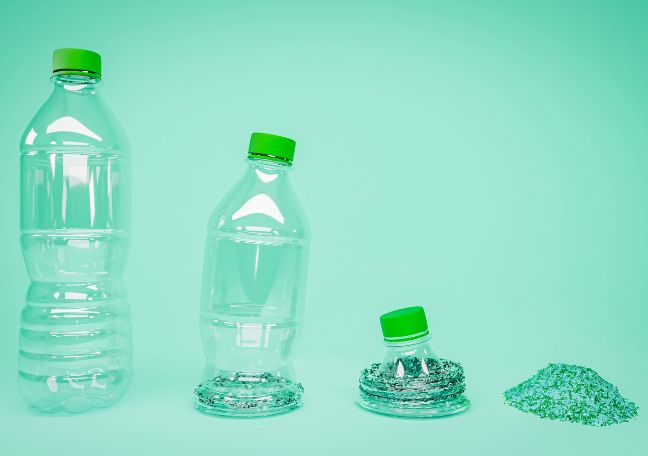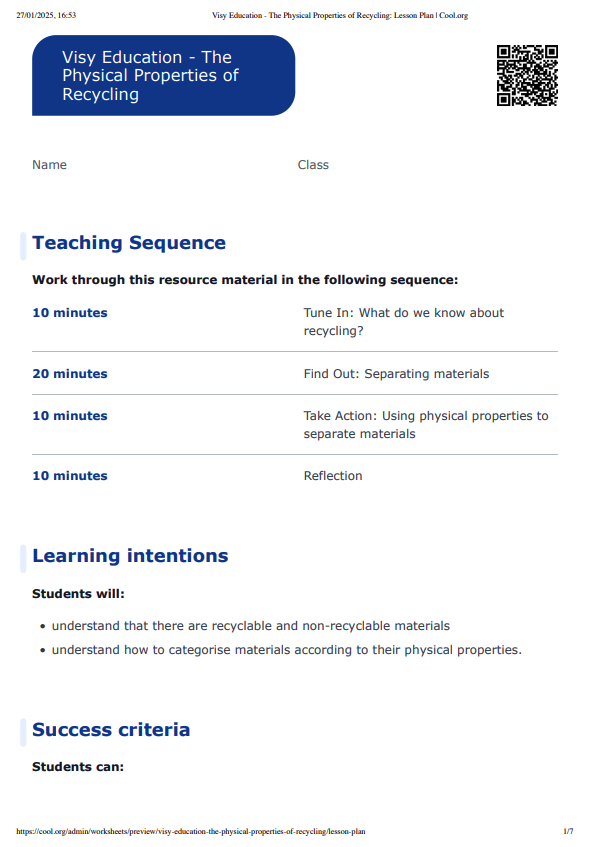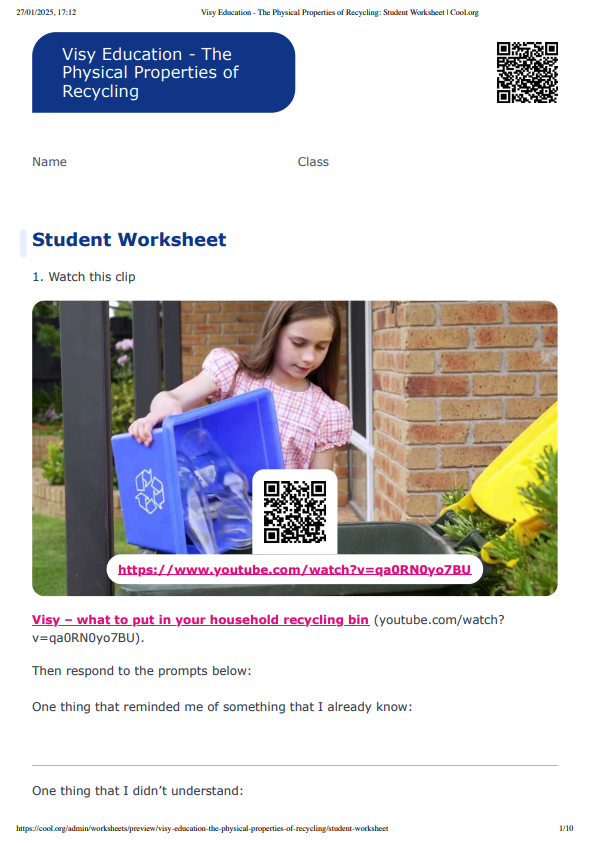Lesson summary
Students will explore how recyclable materials are separated according to the material they are made of using their physical properties. They will read about physical properties and then apply their understanding when watching a series of short clips that show materials being separated. Students will then work in small groups to design their own way to separate one specific recyclable material from other objects by exploring its physical properties.
Learning intentions:
Students will...
- understand that there are recyclable and non-recyclable materials
- understand how to categorise materials according to their physical properties.
Success criteria:
Students can...
- classify materials into recyclable and non-recyclable categories
- identify one physical property of a certain material that can be used to separate it from other materials
- apply their knowledge about materials to design a way to separate recyclable materials.
Lesson guides and printables
Curriculum links
Select your curriculum from the options below.
Lesson details
Skills
This lesson is designed to build students’ competencies in the following skills:
- adaptability
- creative thinking
- critical thinking
- communication
- cultural understanding
- initiative
- problem solving
Curriculum Mapping
Australian Curriculum (v9.0) content description:
Year 7 Science
Students learn to:
- investigate and represent balanced and unbalanced forces, including gravitational force, acting on objects, and relate changes in an object’s motion to its mass and the magnitude and direction of forces acting on it (AC9S7U04)
- use a particle model to describe differences between pure substances and mixtures and apply an understanding of the properties of substances to separate mixtures (AC9S7U06)
- write and create texts to communicate ideas, findings and arguments for specific purposes and audiences, including selection of appropriate language and text features, using digital tools as appropriate (AC9S7I08).
Relevant parts of Year 7 achievement standards: Students represent and explain the effects of forces acting on objects. They use particle theory to explain the physical properties of substances and develop processes that separate mixtures. They select and use language and text features appropriately for their purpose and audience when communicating their ideas and findings.
NSW Syllabus outcomes:
Stage 4
A student:
- describes the effects of forces in everyday contexts SC4-FOR-01
- explains how the properties of substances enable separation in a range of techniques SC4-SOL-01
General capabilities: Literacy, Critical and Creative Thinking, Ethical Understanding
Cross-curriculum priority: Sustainability
Level of teacher scaffolding: Medium – The teacher will facilitate the scientific design process.
UN Sustainable Development Goals
UN SDG 12: Ensure sustainable consumption and production patterns
- Target 12.5: By 2030, substantially reduce waste generation through prevention, reduction, recycling and reuse.
Resources Required
- 2 bins or buckets labelled ‘Recycle’ and ‘Landfill’
- Device capable of presenting a video to the class
- Samples of commonly found waste from the school (1 per student)
- Student Worksheet (1 copy per student)
Additional Info
This lesson has been developed in partnership with Visy. For over 70 years, Visy has been committed to finding sustainable solutions for Australia's and New Zealand’s recyclables and helping to reduce local landfills. Visy collects, receives, and sorts paper, cardboard, glass, plastics, steel, and aluminium from households, businesses, and schools to reuse these products and re-manufacture new packaging products.
Related Professional Learning
Fit Sustainability Into the Secondary Curriculum
Quick Summary: In this course, you will learn a holistic definition of sustainability, which goes beyond compost bins and solar panels and how to embed sustainability concepts to enrich your current curriculum without it being an add-on.



Welcome back!
Don't have an account yet?
Log in with:
Create your free Cool.org account.
Many of our resources are free, with an option to upgrade to Cool+ for premium content.
Already have an account?
Sign up with:
By signing up you accept Cool.org's Terms and Conditions(Opens in new tab) and Privacy Policy(Opens in new tab).